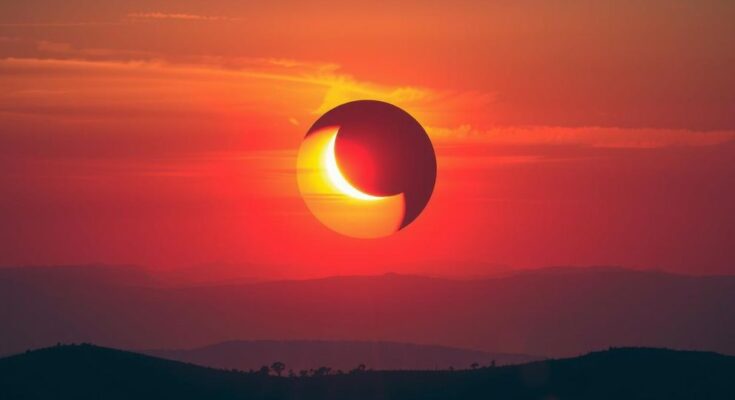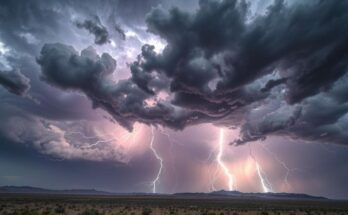On March 29, 2025, a partial solar eclipse, termed Surya Grahan, will be visible in regions like the U.S. and Canada, producing a rare double sunrise effect. India will not witness this event. Eye safety is critical; observers must use specialized eclipse glasses. The eclipse occurs from 2:20 PM to 6:13 PM IST, with maximum visibility noted in parts of northeastern Canada and Greenland.
On March 29, 2025, a partial solar eclipse, referred to as a Surya Grahan, will occur as the Moon moves between the Earth and the Sun, partially obstructing its light. This event is particularly distinguished as a ‘double sunrise eclipse,’ where observers may witness the Sun appearing to rise twice in certain locations, although India will not experience this phenomenon.
For those keen to observe this celestial event, visibility will be limited to specific regions, including parts of the United States, Canada, Greenland, and Iceland, while individuals in India will need to explore live online options to witness it.
The solar eclipse’s timeline in Indian Standard Time indicates it will commence at 2:20 PM, peak at 4:17 PM, and conclude at 6:13 PM, totaling approximately four hours. Observers within the viewing regions include eastern Canada and northern Russia, and the event is expected to start at 08:50 GMT, concluding at 12:43 GMT, with the maximum eclipse occurring at 10:47 GMT in northeastern Canada and Greenland.
Notably, a maximum of 90 percent of the Sun may be covered in certain northern latitudes. However, in areas like France, only 10 to 30 percent of the Sun’s disc will be obscured, making the experience less dramatic. The rarity of this astronomical alignment underscores the significance of the event.
When viewing a solar eclipse, safety is paramount. NASA strongly advises utilizing certified eclipse glasses or handheld solar viewers, as regular sunglasses are inadequate and hazardous. Protective eyewear should be assessed for any damage prior to use, and children’s viewing must be supervised to ensure secure usage. Regular eclipse glasses should never be used with telescopes, binoculars, or cameras as this could lead to severe eye damage.
Safe viewing is only permissible during totality, the brief period when the Moon entirely conceals the Sun, after which protective eyewear should be reapplied immediately. Additionally, individuals planning to observe the eclipse outdoors for extended periods should prioritize skin protection through sunscreen application, appropriate clothing, and hats to shield from sun exposure.
The March 29, 2025 solar eclipse presents a unique opportunity for observers in specific regions, particularly in parts of North America and Europe, although it will not be visible in India. The event necessitates stringent eye safety measures as outlined by NASA, ensuring a safe and enjoyable viewing experience. With proper preparation, enthusiasts can embrace this remarkable celestial occurrence safely and knowledgeably.
Original Source: www.hindustantimes.com




